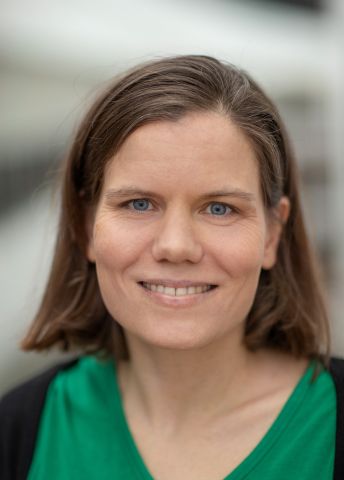
Josefin Larsson
Professor in Astrophysics
Wallenberg Academy Fellow/Wallenberg Scholar
Institution:
KTH Royal Institute of Technology
Research field:
Supernovae and jets


Wallenberg Academy Fellow/Wallenberg Scholar
Institution:
KTH Royal Institute of Technology
Research field:
Supernovae and jets
Do you have silver jewelry? If so, you own a material that was created either when a huge dying star exploded, or when the compact remnants of two supernovae collided with each other.
When the universe was born – the Big Bang – the very lightest elements were formed, hydrogen in particular. All the heavier elements then formed as a result of various processes in the universe. The most common one is the fusion process that causes our Sun and other stars to shine: light nuclei fuse together in the interior of stars to form heavier atomic nuclei, releasing energy in the process.
Elements up to iron can be formed in this way. But the creation of heavier elements, like silver, requires large amounts of energy – as in a powerful stellar explosion.
“Supernovae form and disperse elements that serve as the building blocks for new stars and planets, as in our own solar system. In doing so, they play an important role in the evolution of the universe,” says Larsson, who does research in astronomy at KTH Royal Institute of Technology.
The reason why enormous stars end their lives by exploding is their great mass and hence strong gravity. As long as the fusion process continues, the energy released counters the effect of gravity, but when the fuel runs out, the star collapses under its own weight. Its interior collapses to form a small but very massive neutron star, onto which the outer parts fall and bounce off. An explosion has occurred.
“These are complicated processes. Stars can probably explode in different ways, and we still don’t really know exactly how these explosions occur,” Larsson comments.
She is making observations using various telescopes to study supernovae, both during the explosion itself, and later on to see how the remnants develop over a period of years and centuries. She is also studying jets – narrow beams of charged particles and radiation, which are ejected close to the speed of light in some explosions. Jets are observed as short flashes of gamma-rays.
“The long-term nature of the grant gives me a fantastic opportunity. It means I can adopt a different strategy, with greater freedom to try out things that are less of a safe bet.”
Modern highly sensitive instruments enable scientists to discover new supernovae every day, so there isa a wealth of objects to study.
“Over the past few years we have made great strides in our ability to compare observations with theoretical models in three dimensions. We’re using observations to establish which atoms and molecules are present, and how they’re mixed, in order to gain a better understanding of how the explosion occurs.”
One old favorite that Larsson has been following closely for many years is Supernova 1987A, which was discovered just over 30 years ago in a neighboring galaxy – the Large Magellanic Cloud. The images of SN 1987A show three rings around the supernova. They formed long before the explosion, probably when two stars merged.
“The material ejected by the supernova has now started to collide with the matter between the rings, causing it to emit light. That light helps us understand how the star evolved before it exploded. We’re monitoring how the ejected matter propagates outward through the ring system, which is gradually providing us with more information about the past life of the star.”
So far no one has managed to observe the neutron star that should be visible as a bright dot at the center of SN 1987A. Either it is obscured by dust, or it may have collapse into a black hole.
“What makes supernovae so interesting is that they combine a number of different branches of astronomy. They provide information about the star that existed before the explosion; they affect the evolution of the galaxies, and they leave behind a neutron star or a black hole,” Larsson explains.
She is also increasingly interested in the extensive astronomy archives containing observations from different telescopes.
“One example is the XMM-Newton X-ray telescope, which has been making observations in space for 20 years. It is expected to have captured the very first signal from many supernovae by chance. The signal is a short flash of X-rays known as a ‘shock breakout’.”
There has only been one definite observation of an X-ray shock breakout signal. But when one of Larsson’s PhD students reviewed the data from XMM-Newton, they found no fewer than twelve new candidates.
“We’re going to take a closer look at the galaxies where the shock breakout candidates occurred. But I also want to continue searching through the archives, and see whether we can find more interesting and unusual signals.”
Astronomers find new supernovae every day, yet they are rare events. They occur about once a century in a galaxy like the Milky Way. The last one seen to explode in our Galaxy was Kepler’s Supernova in 1604, named after the astronomer Johannes Kepler.
“It’s about time for another one. It would be enormously valuable if we could study a supernova at such close quarters. It would enable us to see far more details and detect really weak signals,” says Larsson.
Text Ingela Roos
Translation Maxwell Arding
Photo Magnus Bergström, Josefin Larsson